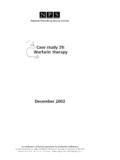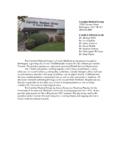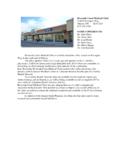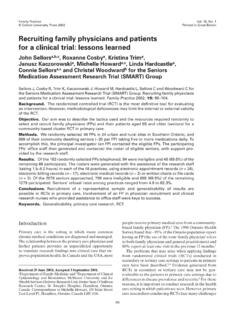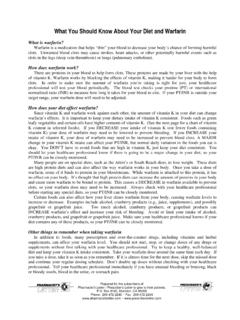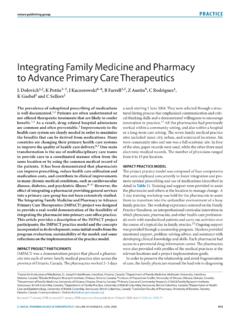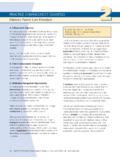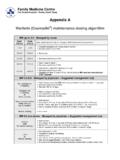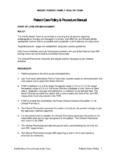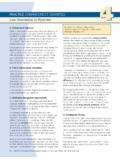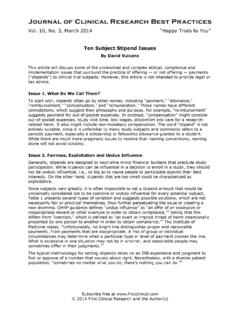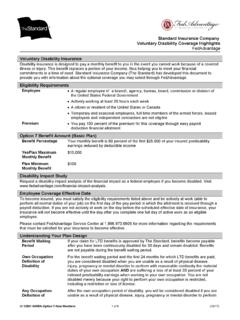Transcription of Business Case for Additional Pharmacist FTE - IMPACT Team
1 Business case for Additional Pharmacist FTE. Currently at the Summerville Family Health Team there is a FTE Pharmacist position (started in October 2007 part-time and phased in). The Pharmacist currently provides a variety of clinical pharmacy services including patient medication assessments, responses to drug information questions from patients and health care providers, drug information updates for FHT staff for new drug and safety information, health care provider education, and committee involvement for program development.
2 The Pharmacist is currently accountable to 4 sites within the FHT which includes 25 physicians, 6 nurse practitioners and a number of other health care professionals. All three sites are within a 16 km distance. The Pharmacist 's office is located at the central site where the majority of patient and health care provider contact occurs. The Pharmacist also spends day in 2 of the other 3 clinic sites each week. Proposal: Addition of 1 FTE Pharmacist at this time Background Development of the Pharmacist Role Although pharmacists have been working in primary care family practice teams in a small number academic teaching centres for 10 years, the expansion of Pharmacist 's involvement in family practice teams and community sites is more recent.
3 Previous research on the integration of pharmacists into primary care practice ( IMPACT project and others) has suggested that role integration takes time, requires a learned understanding and negotiation of the pharmacists role and access of the Pharmacist is critical for the full development of the role. The Pharmacist 's role at the Summerville Family Health Team is continuing to grow and evolve. The Pharmacist 's involvement in patient care is highly collaborative. In providing independent comprehensive medication assessments in the family practice setting, the FHT Pharmacist must interact and collaborate directly on site with physicians and other health care providers on a regular basis in order to identify and solve drug-related problems identified during the medication assessment.
4 On site access to the Pharmacist is also important for just in time' answers to drug information questions for patient care. In addition, pharmacists in primary care practice across Ontario have begun to expand their clinical role of conducting patient medication assessments to further integrate their activities into medication management systems within the office setting ( refills, anticoagulation management) and to further support the patient's medication-taking practice ( chronic disease management and education).
5 Opportunities for Clinical Pharmacy Service Coverage, Program Development and Health Care Professional Education Expansion of Pharmacist Coverage to All 4 Sites At the current time of role integration into the FHT team, health care providers are utilizing the clinical Pharmacist most when there is on site access to the Pharmacist . Increasing Pharmacist coverage and time at all sites would improve Pharmacist integration and improve access to on site drug information and patient care consultations to meet the needs of the practice site.
6 For example, with an Additional FTE Pharmacist , coverage could be increased to FTE ( half days) per site. This would provide a ratio of 1 Pharmacist for 10 to 13 physicians and 2-4 nurse practitioners. This would also provide Pharmacist back up for vacation and out of office periods. 1. Patient care and medication assessments achieve the best outcomes when follow up and monitoring can occur on a regular basis. Monitoring of patient medication-related outcomes for each of the 4 sites would be best achieved with a Pharmacist on site for a greater portion of the time.
7 Elderly patients, which are a large source for medication assessments, often would like to see a Pharmacist on a referral basis when they are at their physician's appointment. Greater coverage would allow for more flexibility in booking Pharmacist appointments to meet the needs of the patients. Integration and Development of Additional Patient Care Activities Integration of the clinical Pharmacist in patient care activities for chronic disease management initiatives with a large medication burden such as hypertension, dyslipidemia and diabetes would be beneficial to help achieve outcomes related to medication education, meeting treatment targets and support of patients self-management.
8 A variety of studies have identified that medication management and patient education by pharmacists can improve clinical outcomes in patients with hypertension, dyslipidemia and diabetes. More recently the use of medical directives by clinical pharmacists for making dose adjustment to optimize drug therapy ( to achieve target blood pressure or cholesterol). has provided support to health care professionals, and has improved patient outcomes. Pharmacist involvement in program development in the Chronic Disease and Health Promotion Teams could be expanded.
9 In addition the Pharmacist could play an active role in Quality Improvement Teams and in the Family Health Team Learning Collaborative could be expanded. Further development and integration of the Pharmacist 's role in medication-related tasks in the medication use process at each site, such as anticoagulation monitoring, medication refills, and annual medication review, could be beneficial to free up health care provider time. Full development of the Pharmacist 's role in these patient care activities would require some cross coverage and back up.
10 Up to 25% of hospitalizations have been reported to be related to drug therapy and are related to medication adverse effects. Expanded Pharmacist involvement at all 4 sites and identifying system supports to IMPACT this could be investigated. In addition to drug information the clinical Pharmacist can also serve as a mentor and facilitator for optimal drug use for health care professionals within the FHT. Drug therapy information is changing frequently and a health care professional focused on drug therapy can provide support for this constantly changing practice.
